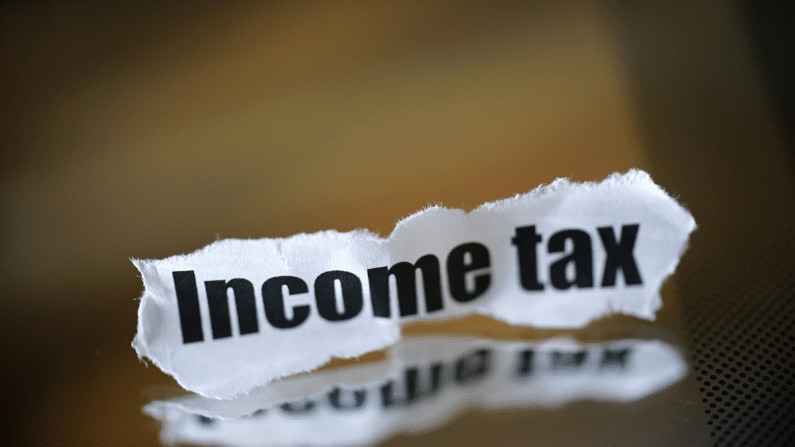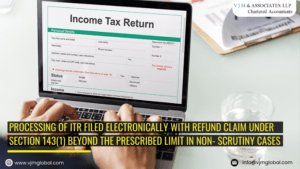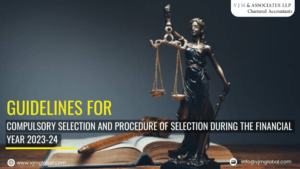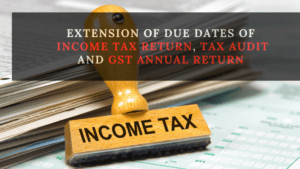For the purpose of Income tax return filing, mere uploading a return file is not sufficient. Post uploading of return, sending a signed copy of acknowledgment (ITR-V) was prerequisite to verify Income tax return or verify ITR and complete the filing process. ITR is considered as not filed till it ITR verified and the signed copy of ITR-V is not received at Central Processing Cell (CPC), Bangalore.
With digitalisation of Income tax process, requirement of sending ITR to CPC, Bangalore has been replaced with electronic verification of Income tax return. Income tax portal provides various options to electronically verify ITR.
If you ever wondered who to verify your income tax return, In this article please find all means to verify your Income tax return.
1. Methods to E-Verify Your Income Tax Return
After successfully uploading your income tax return, the next step comes is to verify ITR. The Income Tax Department starts processing your return under section 143(1) of Income Tax Act, once it is successfully verified.
Therefore, till the time the electronic verification is not done, return is not considered as filed and therefore, Refunds, if any, shall not be issued to the taxpayer.
Income tax portal provides If you have already filed your ITR, follow these simple steps for e-Verification following methods of electronic verification:
2. Process of Electronic verification:
- Login to Income tax e-Filing Portal https://www.incometaxindiaefiling.gov.in/home with PAN and password.
- Click on “My Account” and in the drop down Select “e-Verify Return”
- All the filed ITRs pending for Verification will be displayed, click on “e-Verify” link against the ITR which is to be e-Verified
- Upon clicking, system will ask to generate Electronic Verification Code (EVC) through following options to complete verification process:
- Generate through Aadhar Number
- Generating EVC via Net-banking,
- Generating EVC via bank account
- Verifying ITR via Demat Account
- Generating EVC through bank’s ATM
- Upon selection of desired option, system will Generate EVC
- Enter the EVC and Click on “Submit”
- Upon submission, ITR will start appearing as filed.
Here, we will discuss in detail each and every method of electronic verification:
2.1 Verify ITR via Aadhaar
To verify your ITR using the Aadhaar-based one-time password (OTP), your mobile number must be linked to Aadhaar and registered as such in the Unique Identification Authority of India (UIDAI) database and your PAN must be linked with Aadhaar.
Go to ‘My Account’, and click on ‘e-verify return’ and select the option, ‘I would like to generate Aadhaar OTP to e-verify my return.’ An SMS with the 6-digit OTP will be sent to your registered mobile number.
Enter the OTP received in the box where it is required and click on submit. On successful submission, your ITR will be verified. One must remember that the Aadhaar based OTP is valid only for 30 minutes
2.2 Verify ITR via Net Banking
You can verify your ITR if you have availed the Net banking facility of your bank account. One must remember that only selected banks allow you to e-verify your ITR. Also, before logging in to your bank account, ensure that you are not already logged in on the e-filing website. Your PAN must be registered with the bank as well.
To verify your ITR using Net banking facility, login to your bank account on the bank’s website. Select the e-verify option which is usually under the ‘Tax’ tab. You will be redirected to the e-filing website of the income tax department.
Click on the ‘My Account’ tab and select ‘Generate EVC’ option. A 10-digit alpha-numeric code will be sent to your email and mobile number. This code is valid for 72 hours. Now, go to the ‘e-verify’ option under the ‘My Account’ tab to verify your return. Select the option ‘I have EVC already’.
Enter the OTP that you have received on your mobile number registered with the bank. Click on ‘Submit’ and your ITR will be verified.
2.3 Verify ITR via Bank Account
The income tax department allows you to e-verify your return using your bank account. This facility is available for selected banks. You can check if your bank offers you this facility.
To verify your ITR using your bank account, you must pre-validate it. Go to the profile settings in your e-filing account to pre-validate your bank account. Enter the required details such as your bank’s name, account number, IFSC code, and mobile number. You are required to enter your mobile number that is there is in the bank’s records.
The pre-validation will be successful only if your PAN and name matches with the bank account records. Once pre-validation of bank account is done, select ‘Generate EVC’ option under the ‘My Account’ tab. A code will be sent to you on your mobile number. Select ‘e-verify’ in ‘My Account’ tab and enter the code.
2.4 Verify Income tax-returns through demat account
If you are a demat account holder, you can use your demat account to verify your ITR. This method is similar to the bank account based ITR validation. You must pre-validate your demat account to verify your tax return. Go to profile settings and enter the required details such as mobile number, email ID, and your depository name, i.e., NSDL or CDSL. You must enter a mobile number and email ID which is linked to the demat account.
The pre-validation process is automatic and usually takes about 1-2 hours and if there is any error then it is communicated to you via email. You can use your demat account to generate EVC only after your details are validated by your depository. Go to ‘Generate EVC’ option and select ‘Generate EVC through Demat Account number.’ Enter the EVC received by you on your registered mobile number to successfully verify your ITR.
2.5 Verify Income tax return through your bank ATM
The income tax department offers the facility to generate code through selected bank ATMs.
To generate EVC, visit your bank’s ATM and swipe your ATM card. Click on the ‘Pin for Income Tax filing’. An EVC will be sent to your registered mobile number. This EVC is valid for 72 hours. Log-in to your e-filing account on the income tax website.
Go to the ‘e-verify returns’ option. Select the ITR to verify it and select the option ‘Already generated EVC through bank ATM.’ Enter the EVC and your tax return will be verified.
Note: – You must remember that if you have verified your ITR using any of the electronic methods mentioned above, you are not required to send ITR-V to the income tax department.
2.6 Sending signed ITR-V/Acknowledgement receipt
If an assessee is not well versed with the technology then earlier option of sending hard copy of ITR-V to CPC Bangalore is still available.
If you have chosen to verify your income tax return by sending ITR-V copy to CPC Bengaluru, then it is important that your tax return is verified in 120 days of filing it, as per income tax laws.
Once your ITR-V is received by the income tax department, they will send you an email or SMS confirming the same and will start processing your ITR. Intimation of processing of your ITR will be sent later.
3. Dos and Don’ts while sending hard copy of ITR-V to CPC, Bangalore
Dos
- The ITR-V must be sent via either ordinary post or speed post only.
- Ensure that print-out of ITR-V is printed in black ink and is clear.
- ITR-V to be sent to the CPC, Bengaluru must be signed in original and preferably in blue ink.
- Bar code and numbers below it should be clearly visible.
- There is no limit on the number of the ITR-Vs that can be sent in one envelope.
- The print of ITR V should be on A4 size paper only.
- Sign on ITR- V should match with your sign on PAN Card.
Don’ts
- ITR-V sent via courier will not be accepted.
- ITR-V is a one-page document. One should not write anything on the back of it.
- While sending ITR-V, avoid folding it to ensure that bar code is not tampered with in the process.
- If you are sending multiple ITR-Vs, whether original or revised, make sure to print each of them on separate page.
- You are not required to send other document/s along with ITR-V.
Upon successful verification of ITR through either of the above mentioned option, system will generate following message:
4. Consequences of not verifying ITR
An ITR filed but not verified is treated as an invalid return by the income tax department. An invalid return would mean that you have not filed the ITR for a particular assessment year. In that case, you would be required to file the ITR again as belated return because your original one is treated as invalid.
If the filed ITR is not verified by the taxpayer within the specified timeline, then it will not be considered valid, i.e., it would mean that you have not filed your ITR. This in turn would mean that when you file your return after due date, you might have to pay a penalty as per laws.
5. Extension of time limit of e-verification of pending ITR of AY 2015-16 to 2019-20
The Central Board of Direct Taxes (“CBDT” or “Department”), issued a circular No. 3/2020 on 13th July 2020 for all the taxpayers regarding the verification of pending ITRs. CBDT announced a one-time relaxation for the taxpayers for the verification of pending Income tax-returns for AY 2015-16 onwards. This relaxation is given for ITRs which are pending for processing and further action due to non-verification of the same by the taxpayer.
For this purpose, CBDT has opened the one time window till 30th September 2020 to complete verification for all the income tax returns that are pending for verification for AY 2015-16 onwards. For this purpose, taxpayer may opt any one of the methods mentioned above. In case the taxpayer chooses to send the physical copy of signed ITR-V form to CPC, Bangalore, then it must reach CPC Bengaluru by 30th September 2020.
Read complete article on relaxation scheme at: Verification of Pending ITRs AY 2015-16 to 2019-20






